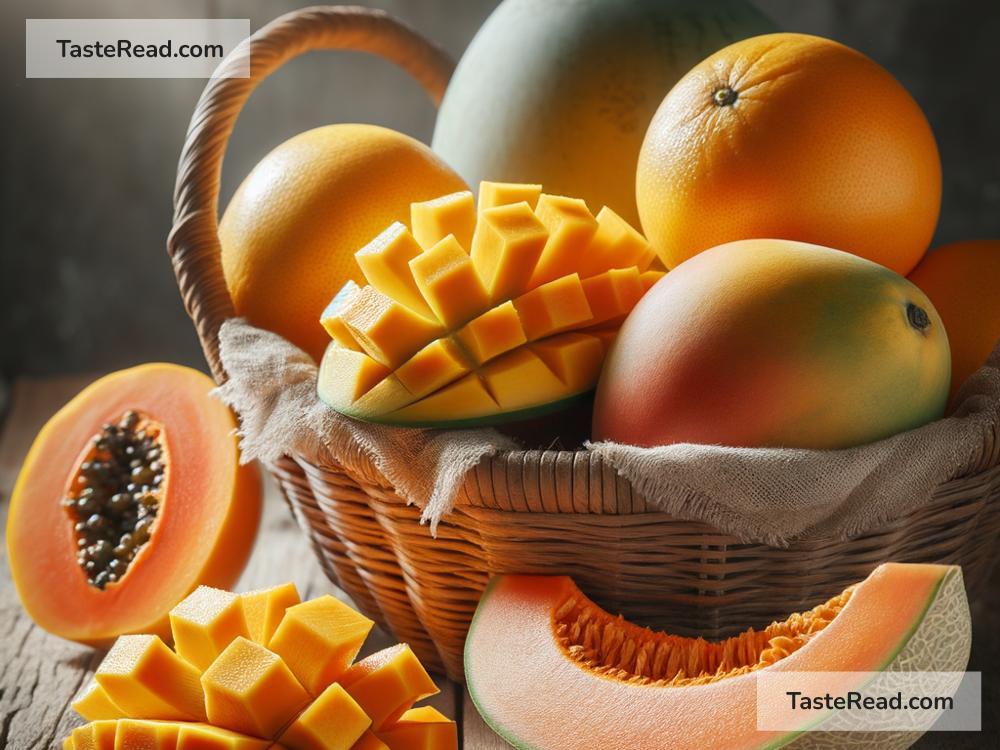The Role of Carotenoids in the Taste of Orange and Yellow Fruits
When you bite into a juicy orange or savor the sweetness of a ripe mango, your taste buds get an explosion of flavors, while your eyes are drawn to their vibrant orange and yellow colors. But what’s behind these appealing colors, and how do they affect the flavor of the fruits? The answer lies in carotenoids, a special group of pigments that play a key role in nature. In this article, we’ll explore what carotenoids are, their importance, and how they influence the taste and color of the fruits we love.
What Are Carotenoids?
Carotenoids are natural compounds found in fruits, vegetables, and other plants. They are responsible for the yellow, orange, and sometimes red colors that make these foods so visually appealing. Carotenoids are also antioxidants, meaning they help protect cells in plants and animals (including us humans) from damage caused by harmful molecules called free radicals.
Some of the most common carotenoids include beta-carotene, lutein, and zeaxanthin. Beta-carotene is especially famous because the body can convert it into vitamin A, which is essential for healthy vision and immune function.
Why Are Fruits Orange and Yellow?
Fruits like oranges, mangoes, papayas, and peaches get their stunning hues from carotenoids, which are stored in the cells of the fruit as they ripen. Early in their development, many fruits are green because they contain chlorophyll, another pigment used by plants for photosynthesis. As the fruit matures, chlorophyll breaks down, and carotenoids take over, giving the fruit its characteristic orange or yellow color.
These bright colors serve a purpose in nature—they attract animals and insects that help the plant reproduce. When animals eat the fruit, they often spread the seeds elsewhere, helping new plants grow.
What Does Color Have to Do With Taste?
You might be wondering what the color of the fruit has to do with its taste. While carotenoids are primarily responsible for the appearance of fruits, they also contribute to their flavor. Interestingly, the level of carotenoids in a fruit can influence both the sweetness and richness of its taste.
Carotenoids don’t directly taste sweet or sour, but they are fat-soluble compounds. This means they interact well with the natural oils and sugars in the fruit, helping to enrich its flavor. The more carotenoids a fruit contains, the more complex its taste can become. For example, a ripe mango or papaya often has a deeper, richer flavor compared to less colorful fruits.
The Sweetness Connection
One of the main reasons orange and yellow fruits taste so good is their high sugar content. As a fruit ripens, carotenoids increase, and sugars build up as well, enhancing the sweetness of the fruit. This combination of natural pigments and sugars creates not just a feast for the eyes but also an enjoyable eating experience.
Some fruits, like oranges and peaches, balance their sweetness with other flavor notes, like tartness or acidity. These flavor complexities work together to make the fruit taste more appealing. Carotenoids, while subtle, enhance this overall flavor profile.
Nutritional Benefits of Carotenoids
Carotenoids aren’t just responsible for great taste—they also provide health benefits. Because they act as antioxidants, eating orange and yellow fruits can help protect your body from harmful damage at the cellular level. Fruits that are rich in carotenoids can improve your immune system, support eye health, and may even lower the risk of certain diseases.
Vitamin A is one of the most important nutrients derived from carotenoids, especially beta-carotene. For example, eating carrots (high in beta-carotene) can improve your vision over time and help keep your skin healthy. Oranges, mangoes, and other carotenoid-rich fruits are an easy and delicious way to get these benefits.
Popular Orange and Yellow Fruits
Let’s take a look at some popular fruits that owe their vibrant colors and delicious tastes to carotenoids:
- Oranges: Packed with beta-carotene and vitamin C, oranges are sweet, juicy, and nutritious.
- Mangoes: Known for their rich tropical flavor, mangoes contain several types of carotenoids that make them both tasty and healthy.
- Papayas: These fruits are filled with beta-carotene, adding to their sweetness and creamy texture.
- Peaches: Peaches are universally loved for their balance of sweetness and tartness, which is partly influenced by carotenoids.
- Apricots: Smaller and slightly tangy, apricots have a beautiful orange hue thanks to carotenoids.
- Sweet Potatoes: While not technically a fruit, their bright orange flesh and sweet taste come from carotenoids like beta-carotene.
Conclusion
Carotenoids play an essential role in the color and taste of orange and yellow fruits. They make fruits visually appealing with their vibrant hues, while also enriching their flavors and providing important health benefits. Without carotenoids, the fruits we enjoy would look dull, taste less flavorful, and be less nutritious.
So, the next time you grab an orange, mango, or papaya, take a moment to appreciate the science behind its color and taste—and enjoy the delicious payoff! These colorful fruits are a gift from nature that nourish your body and delight your senses.


